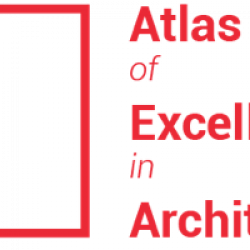
Opening of the website prefiguring the Atlas of Research on Exemplarity in Architecture (AREA)
The bilingual AREA platform is accessible at: https://architecture-excellence.org
Montreal, November 20, 2019 – Raymond Lalonde, Vice-Chancellor for Relations with Alumni, Partnerships and Philanthropy, Raphaël Fischler, Dean of the Faculty of Environmental Design, and Virginie Portes, Director of Funded Research at the Université de Montréal’s Office of Research, Development and Valorization inaugurated, on Tuesday, November 19th, the Canada Research Chair in Architecture, Competition and Mediation of Excellence program (CRC-ACME). Professor Jean-Pierre Chupin, as the Chair holder, presented the main research directions that will unfold over the next 7 years. He officially launched the Atlas of Research on Exemplarity in Architecture (AREA), a website that acts as the prototype of a future open-access scientific resource that is presently being developed by a network of researchers from 12 Canadian schools of architecture. Other universities will join this network over time.
The program of the new Canada Research Chair in Architecture, Competitions and Mediations of Excellence aims to answer a key question in architecture: what defines the quality of built environments? This question is dealt with in a comparative and diachronic manner at the scale of a country, Canada, whereas until now it has been the subject of fragmented analysis. With definitions of quality changing over time, the program will seek to understand how these criteria are used in practice. It will question how peer juries apply – or not – the criteria for “quality” in their collective judgments. It will examine how the users of buildings and public places, once built, feel or perceive the different aspects of architectural quality.
To answer these questions, it is necessary to constitute a representative sample of the architectural production of a country and a period. It is also necessary to have a corpus that derives from the selection processes of peer-review juries, so as not to bias the analysis. Such ensembles exist on a Canadian scale. They consist of award-winning public buildings and spaces, or architectural award winners, and sometimes both, from the late 1980s to the present day. If the award-winning buildings are mediations of excellence (par excellence), the phenomenon begins before the design of the project, continues with the awarding of a prize and obviously much beyond. Award-winning buildings, award after award, year after year, can be interpreted as responses to the constant redefinition of excellence. At the level of everyday experience, how do users perceive the qualities identified by the juries of competitions and prizes to evaluate buildings or public spaces?
The Atlas of Research on Exemplarity in Architecture is designed with the financial support of the Canada Foundation for Innovation, the Université de Montréal’s Centre for Digital Expertise for Research (CEN-R) and Humaneco. It will be hosted by Compute Canada as ongoing database allowing unprecedented comparative analyses of anticipated quality (competition projects) and quality as lived (award-winning buildings). Several thousand competition projects (whether these were winning projects or not) have already been documented in the Canadian Competitions Catalogue, a database created in 2002 through the initiative of the Chair holder and affiliated researchers of the Laboratoire d’étude de l’architecture potentielle (LEAP).
For the documentation of awards, the CRC-ACME team is currently defining a preliminary corpus within more than 6,000 buildings that have been awarded prizes by over seventy public and private institutions in Canada since 1953 (see our Directory of Administrations of Canadian Awards).
The analysis of hundreds of projects requires the establishment of a broad partnership. This partnership is currently being built. The AEA Network will bring together researchers from more than a dozen Canadian universities in the built environment and will invite administrations of awards to collaborate on the development and regular updated of an Agenda of Canadian Awards.
The impact of this work will go beyond architecture as a discipline, as this type of research requires collaboration between social sciences, humanities and engineering. By making available unpublished data on the characteristics of public buildings, by explicating the design criteria along with the appreciation of qualities by a system of actors and users, and by placing collective judgments of quality at the heart of the program, the Chair will create an open dialogue, inviting disciplines such as ethics, sociology, political science, etc., to enter into new questions about the relationships between people and built environments. Through these intersectoral collaborations, we will be better able to engage with the complex impact of spatial quality on health, society, the achievement of environmental objectives, the correlations between technological development, and the search for the highest environmental standards.
